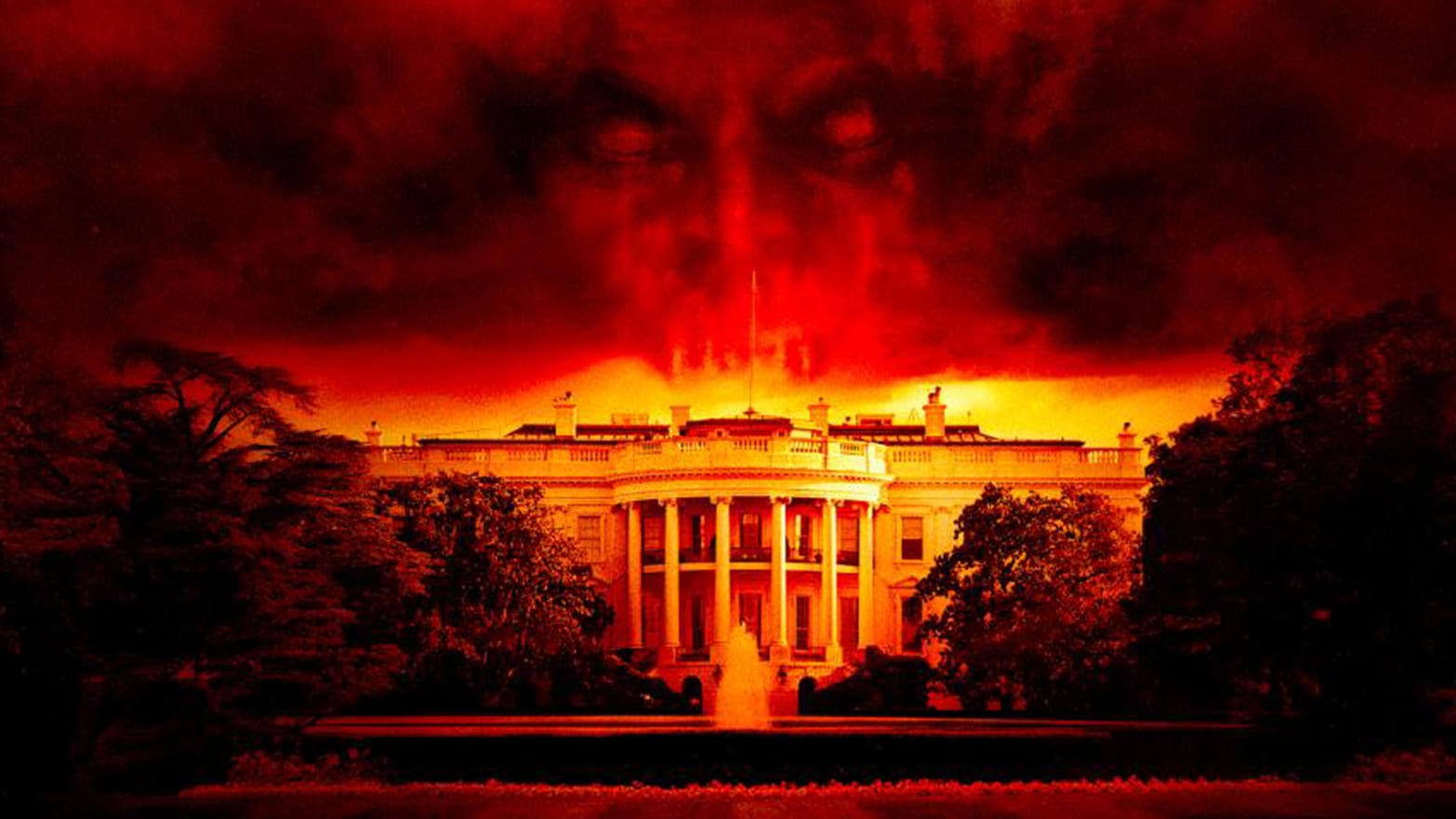“How do we draw that line of what’s real and what’s not?” asks one of the many paranormal experts and authors featured in Shock Docs: Demon in the White House. When it comes to this Discovery+ special, the answer is easy.
Premiering on Discovery+ on Nov. 26, Shock Docs: Demon in the White House strives to paint 1600 Pennsylvania Avenue as the haunted home of a demonic presence. According to the talking heads participating in director Brook Linder’s “documentary,” this makes sense because no residence is as secretive as the White House, and secretive places are obviously hotbeds of paranormal activity. Moreover, we should all be immensely spooked, because demons are intent on manipulating the living, and thus there might be no graver danger faced by America than an evil spirit getting its hooks into a president. It is, in fact, “a matter of national security.”
Our long ghostly nightmare supposedly began in 1853, when Franklin Pierce became the 14th President of the United States. Mere weeks after Pierce won the election, his son Benny died during a horrible train derailment. The tragedy rocked the Pierce clan and especially Pierce’s wife Jane, a “melancholy” woman who’d been raised as a strict Calvinist by her preacher father. Jane responded to this loss by writing letters to Benny. According to Demon in the White House, she also enlisted the services of the Fox sisters, who had become renowned as pioneering spiritualists capable of communing with the dead through seances. Before long, those in the White House came to claim that Jane could be heard talking to her deceased boy.
Did Jane make contact with her dead son? Who knows! Nonetheless, Demon in the White House refuses to let truth get in the way of a good yarn, heaping on dramatic recreations of Jane and the Fox sisters sitting around a table asking Benny to respond to them by knocking once for yes, and two for no. In those and innumerable other sequences, a tall, dark, red-eyed demon invariably materializes in the corner of the room or directly behind an unsuspecting person. Throughout, interview subjects speculate about events and ideas which are then visualized as facts by the show. Such conjecture then builds upon itself, until a bogus overarching narrative is formed that’s predicated on nothing but fanciful guesswork.
This modus operandi reaches its nadir toward the end of Demon in the White House’s passage about the Pierces. Leaping from one dubious contention to another, its reasoning goes something like this: the Pierces conducted seances in the White House; they got in touch with Benny; they then determined that Benny was actually an evil spirit posing as the dead boy; others started to worry that the Pierces were being controlled by Satanic forces; the Pieces thus hired a priest to perform an exorcism in the White House. Literally none of that is definitively verifiable, and a couple of the talking-heads are careful to say that some of these things only could have happened. Still, the show’s dramatic recreations present them as authentic historical incidents.
Demon in the White House’s goofiness doesn’t stop there. It forwards the notion that Pierce signed the Kansas-Nebraska Act—which heightened domestic tensions over slavery, resulting in the “Bleeding Kansas” violence of 1854-1859—under the influence of demons, thereby insinuating that the ensuing Civil War was the handiwork of Beelzebub’s minions. It subsequently switches gears to concentrate on President Abraham Lincoln, who like Pierce lost an 11-year-old son, and whose wife Mary Todd became involved with a spiritualist of her own. That medium, Charles Colchester, may have predicted the president’s murder before it took place, although since he also had ties to Lincoln’s assassin John Wilkes Booth, he might have been both a fraud and a co-conspirator.
Everything in Demon in the White House is either absurdly overstated (“The most amazing ghost photograph ever taken” is how one snapshot is defined) or described with the dullest sort of platitude imaginable (“There’s nothing worse than when your kid is sick, and you feel helpless,” opines one writer). At the same time, director Linder embellishes the proceedings with ceaseless cornball dramatic recreations, scary book illustrations, and jolting edits. Plentiful mentions of Civil War carnage and subsequent national calamities—be it JFK’s assassination, Vietnam or 9/11—are included in order to further amplify the overarching deathly mood. Alas, it will not surprise anyone to hear that those events were not orchestrated by the king of the underworld, regardless of Demon in the White House’s implications to the contrary.
Save perhaps for Michelle Gullion, director of research at the National First Ladies’ Library—who’s brought on to relay basics about the president’s wives—there isn’t a persuasively reputable speaker to be found in Demon in the White House. The nominal difference between a “paranormal expert” and a “paranormal investigator” escapes me, but less difficult to grasp is the transparent spuriousness of this entire endeavor. So weak is the case made by Linder’s special that it confines itself almost exclusively to the 19th century, which it renders as some bygone era of shadowy pseudo-gothic malevolence. As for the present, a few images of Reagan, Clinton and Biden suffice, along with a 15-second video clip of George W. Bush’s daughter Jenna causing her Today co-host Hoda Kotb’s jaw to drop by claiming that she had a ghostly encounter during her time in the White House via a ringing phone in the middle of the night and the sound of 1920s music emanating from her bedroom fireplace.
If that’s all Jenna, and Demon in the White House, has in terms of proof of Oval Office unholiness, I’d say that’s less than the evidence W. had for the existence of WMDs. That may not stop true believers from buying what this Discovery+ affair is selling, but it’s certainly unlikely to win it many new converts.

